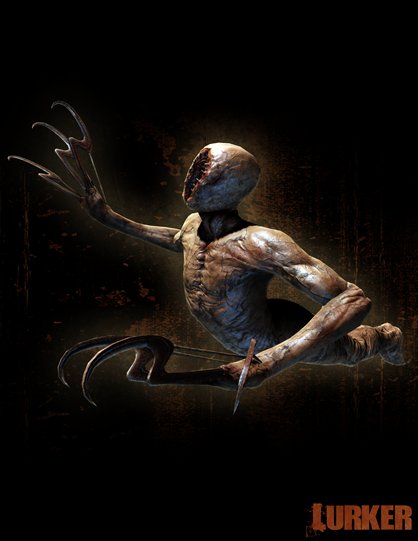Gaming's freakiest monsters: A biological study
An attempt to explain the most bizarre creatures in games

Biosphere: Dead Space, Dead Space Extraction
Classification:Leapus horrificus

The Leaper, typically encountered in deep space environments, is equally at home in Earth-equivalent gravity and zero gravity, using its powerful talons to grip to most surfaces. An ambush predator, it uses surprise and speed to catch prey unawares. Like all animals with tails, it uses its massive tail for balance while running. Although the tail also appears to function as a formidable weapon, similar to that of a scorpion, Leapus horrificus seems reluctant to use it as such. Without a potent poison to deliver, the tail proves not particularly lethal, and due to a lack of rear legs, it is probably difficult to maintain balance and lash out with the tail. This leads us to conclude that the impressive, sharp tail tip is mostly for display, both to intimidate potential predators and competitors for mates.
Let's see how the Leaper does, in fact, hunt for food...

Right. Well, when it gets close, we can see, aside from the rather unfriendly behavior, that the Leaper presents formidable, and complex mandibles. While there are proper fangs, there are also two sets of hinged mandibles separate from the jaw, which appear similar to a spider’s pedipalps. Usually such structures serve to better move pieces of food into the mouth for consumption. Note, also, that the tearing of the skin at the sides of the head suggest that the jaw can dislocate like a snake’s, allowing for the swallowing of prey whole.
Reports that Leapers use their graceful tails in elaborate mating dances have yet to be confirmed, as typical observes tend not to survive encounters. At all.
Biosphere: Dead Space, Dead Space Extraction
Classification:Infantus incorrigible

It's been shown throughout the animal kingdom that “cuteness” is a universal evolutionary adaptation. Baby animals share the traits of an enlarged cranium, proportionally large eyes, with other facial features diminished. As no reports have ever confirmed sightings of “adult” Lurkers, the running theory is one of mimicry – the Lurker takes on the appearance of an infant in order to induce feelings of sympathy in its adult human prey.
Sign up to the GamesRadar+ Newsletter
Weekly digests, tales from the communities you love, and more
Through the outer carapace sprout three appendages used for self-defense. These extrusions also serve to warn predators away, and helps to make the Lurker look larger, thus intimidating less-intelligent animals. The tentacles may also serve as ovipositorsor sexual organs, which on the latter one biologist noted being a “disturbing possibility I don't want to think about.”
While typically skittish, Infantus incorrigible has been known to become quite aggressive when threatened, as can be seen here:

Sure are friendly little fellas! Up close, we can better see the infant-like outer shell. With the dorsal appendages extended toward the face of the prey, the possibility of reproduction becomes clear. While many scientists agree this behavior is purely defensive or predatory, others have suggested a more benign purpose – that the mimic-minded creature is merely duplicating infant behavior and is “coming to mama.”
Either way, scientists agree that encouraging said behavior in Lurkers injury on the part of the scientist and separation anxiety for the “child.”



